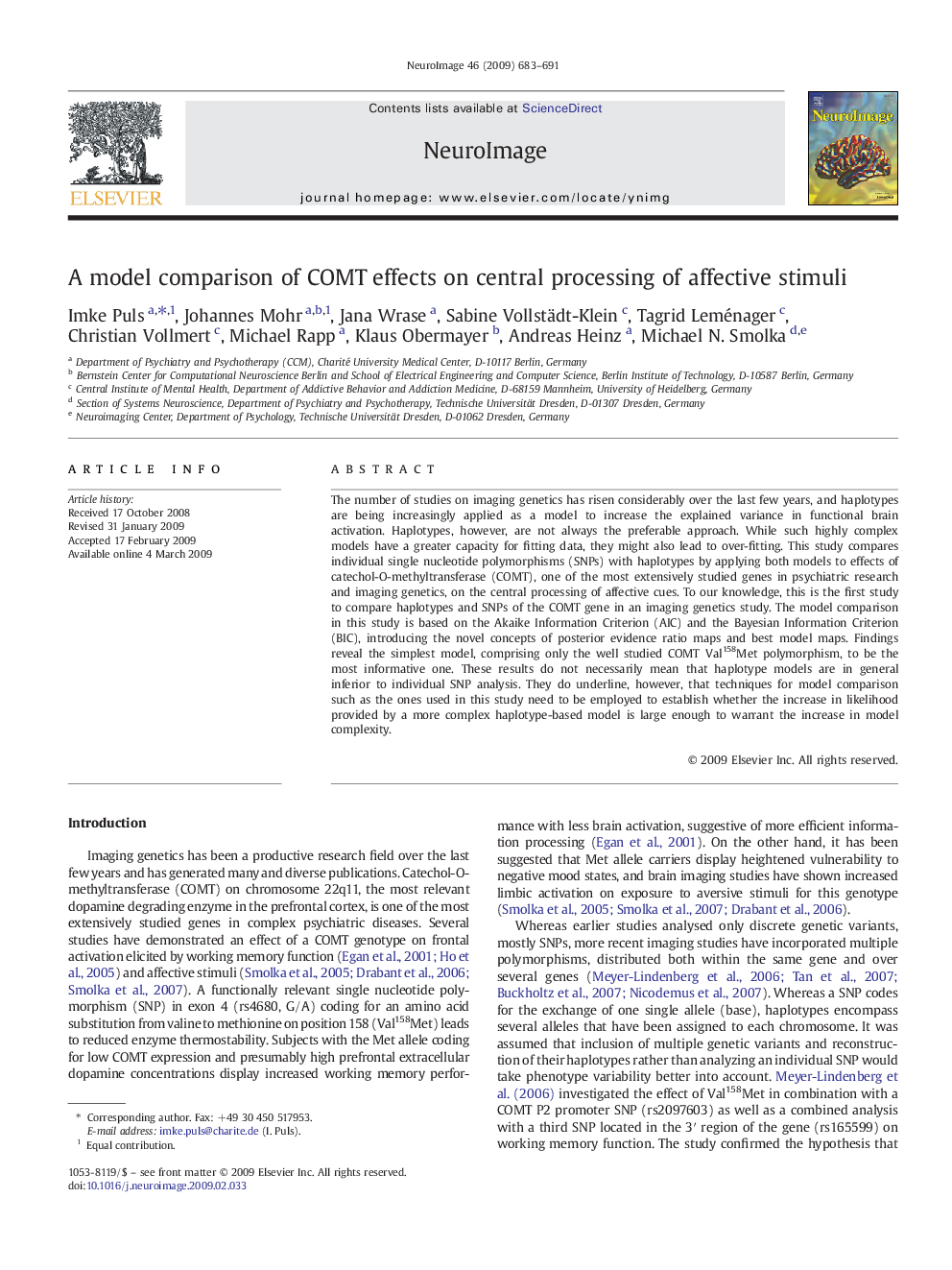| Article ID | Journal | Published Year | Pages | File Type |
|---|---|---|---|---|
| 6037856 | NeuroImage | 2009 | 9 Pages |
Abstract
The number of studies on imaging genetics has risen considerably over the last few years, and haplotypes are being increasingly applied as a model to increase the explained variance in functional brain activation. Haplotypes, however, are not always the preferable approach. While such highly complex models have a greater capacity for fitting data, they might also lead to over-fitting. This study compares individual single nucleotide polymorphisms (SNPs) with haplotypes by applying both models to effects of catechol-O-methyltransferase (COMT), one of the most extensively studied genes in psychiatric research and imaging genetics, on the central processing of affective cues. To our knowledge, this is the first study to compare haplotypes and SNPs of the COMT gene in an imaging genetics study. The model comparison in this study is based on the Akaike Information Criterion (AIC) and the Bayesian Information Criterion (BIC), introducing the novel concepts of posterior evidence ratio maps and best model maps. Findings reveal the simplest model, comprising only the well studied COMT Val158Met polymorphism, to be the most informative one. These results do not necessarily mean that haplotype models are in general inferior to individual SNP analysis. They do underline, however, that techniques for model comparison such as the ones used in this study need to be employed to establish whether the increase in likelihood provided by a more complex haplotype-based model is large enough to warrant the increase in model complexity.
Related Topics
Life Sciences
Neuroscience
Cognitive Neuroscience
Authors
Imke Puls, Johannes Mohr, Jana Wrase, Sabine Vollstädt-Klein, Tagrid Leménager, Christian Vollmert, Michael Rapp, Klaus Obermayer, Andreas Heinz, Michael N. Smolka,
